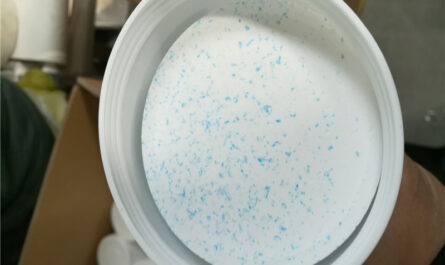Water is vital for sustaining life. However, in its natural state, water can contain harmful contaminants that pose health risks if consumed without treatment. Chemicals play a key role in water and wastewater treatment processes to purify water and make it safe for human use and the environment.
Coagulants and Flocculants
The first stage in water treatment involves the addition of coagulants and flocculants to remove dissolved and suspended particles from raw water sources. Common coagulants used are aluminum sulfate (alum), ferric sulfate, ferric chloride, and polyaluminum chloride. When added to water, coagulants help neutralize negative charges on particulate matter, allowing particles to stick together through the process of coagulation.
Flocculants like polyacrylamide polymers are then used to help bridge particles and form larger clumps or “flocs.” The flocs formed after coagulation and flocculation are heavier and easier to remove through sedimentation or filtration. Coagulants and flocculants play a critical role in removing contaminants like dirt, bacteria, algae, viruses, and protozoa from raw water. Their use significantly improves the quality of drinking water through physical removal of particles and pathogens.
Disinfectants
Once water has been clarified through coagulation, flocculation, sedimentation and filtration, disinfectants are added to kill or inactivate any remaining microorganisms that may cause waterborne diseases. Chlorine in the form of gas, liquid sodium hypochlorite or calcium hypochlorite is the most commonly used disinfectant in water and waste water treatment chemicals due to its effectiveness and low cost. Chlorine forms hydrochloric and hypochlorous acid when added to water, which can penetrate and destroy bacteria and viruses.
Other disinfectants gaining popularity include chloramines (a combination of chlorine and ammonia), chlorine dioxide, and ultraviolet (UV) light. While UV light does not involve chemicals, it works by damaging nucleic acids of microbes, rendering them incapable of reproduction. Disinfection is the final critical process that ensures the treated water is free from pathogens before distribution to the public.
Corrosion Control
To mitigate the corrosion of pipes during water distribution and extend the life of infrastructure, corrosion inhibitors are added. Common corrosion inhibitors include orthophosphate, blended phosphate, sulfuric acid, and silica. Orthophosphate prevents corrosion by forming a protective film on metal surfaces that isolates it from water. Sulfuric acid is used to lower pH and solubilize lead and calcium carbonate deposits in water mains. Proper pH adjustment and inhibition of corrosion is important to maintain water quality and prevent contamination from lead and other heavy metals leaching from aging pipes.
Wastewater Treatment Chemicals
Many of the same chemicals used in drinking water treatment are also applied during the wastewater treatment process to remove contaminants before discharge or reuse of treated effluent. Coagulants like ferric chloride aid in clarification and removal of solids. Sodium hypochlorite or gaseous chlorine kills pathogens. Dechlorination chemicals such as sodium bisulfite or sulfur dioxide are added after chlorination to remove residual chlorine that could harm aquatic life in receiving waters.
Polymers are used as flocculants, and often cationic polymers at that, to help bacteria and solids aggregate for improved sedimentation. Caustics like sodium hydroxide are added for pH adjustment while phosphates control corrosion in collection systems. Oxygen releasing compounds introduce dissolved oxygen into wastewater to support biological treatment processes. Proper application of chemicals allows municipal wastewater facilities to meet stringent discharge limits and protect the environment.
Regulations and Standards
The usage of water treatment chemicals is regulated to ensure safety. The U.S. Environmental Protection Agency (EPA) develops and enforces national standards under the Safe Drinking Water Act. EPA regulations specify maximum contaminant levels (MCLs) for chemical residues permitted in drinking water. Standards cover inorganic and organic chemicals from both natural and man-made sources. Strict guidelines and diligent water quality monitoring help provide high-quality drinking water compliant with all regulations.
Water treatment facilities must be properly designed and operated to effectively apply chemicals within legal dose ranges. Operators are specially trained and licensed to safely handle and apply treatment chemicals according to standard procedures. Ongoing research also leads to development of novel chemicals and enhanced treatment technologies that allow operators to meet more stringent regulations to come. Proper regulations, oversight, and chemical application are critical for consistently supplying clean drinking water to the public.
*Note:
- Source: Coherent Market Insights, Public sources, Desk research
- We have leveraged AI tools to mine information and compile it




